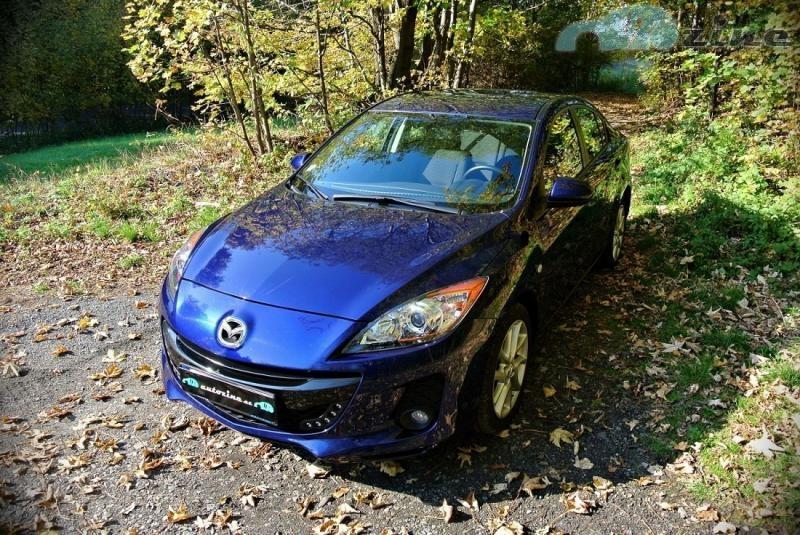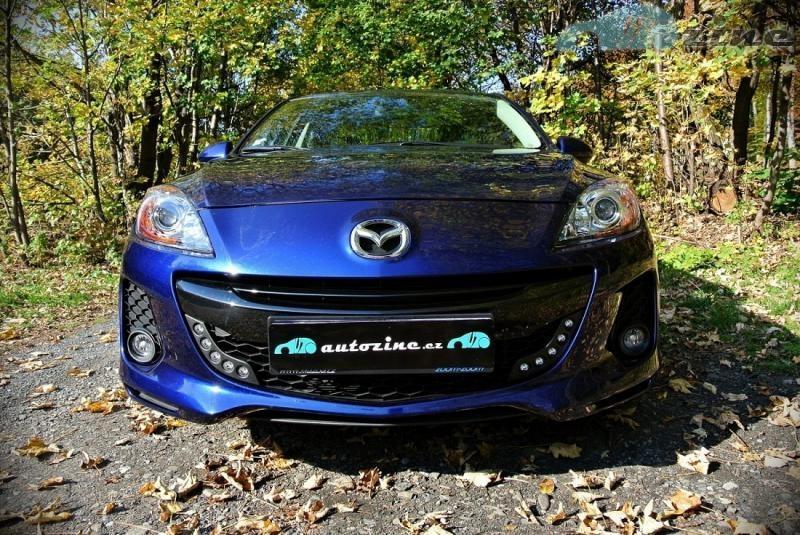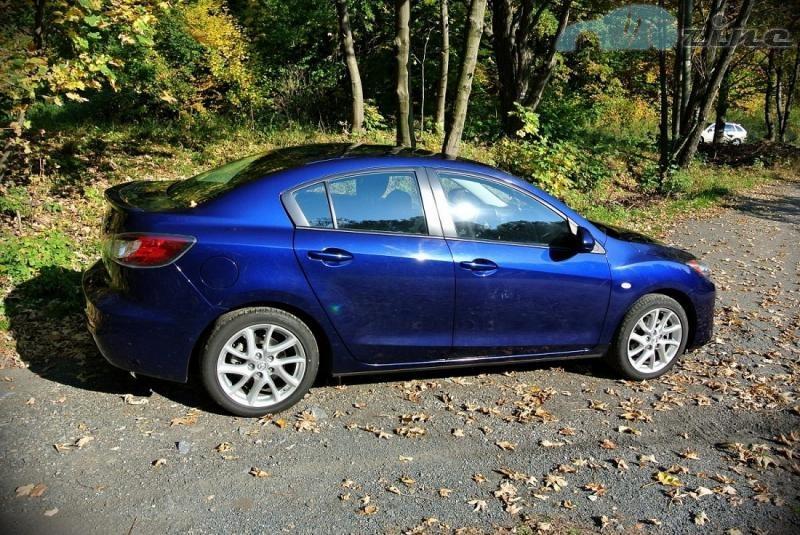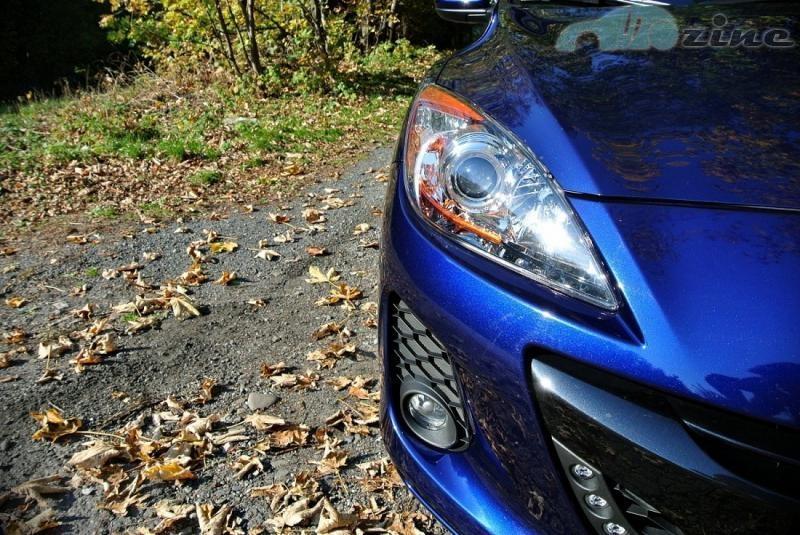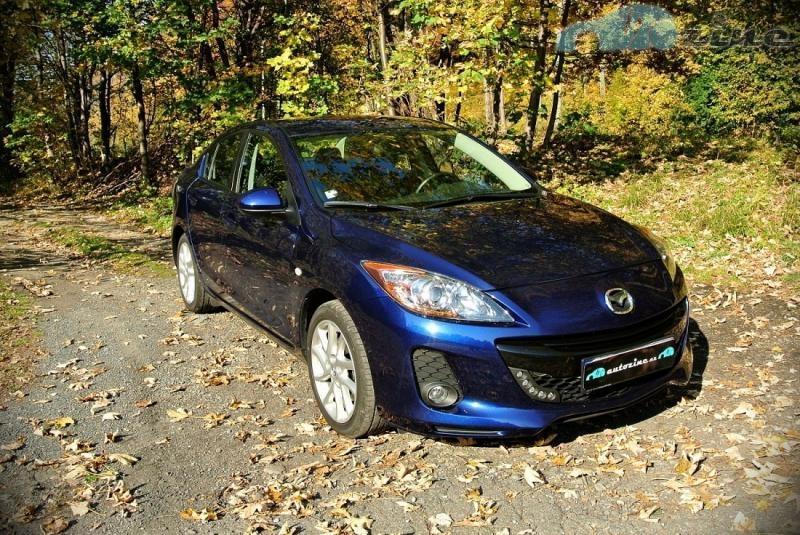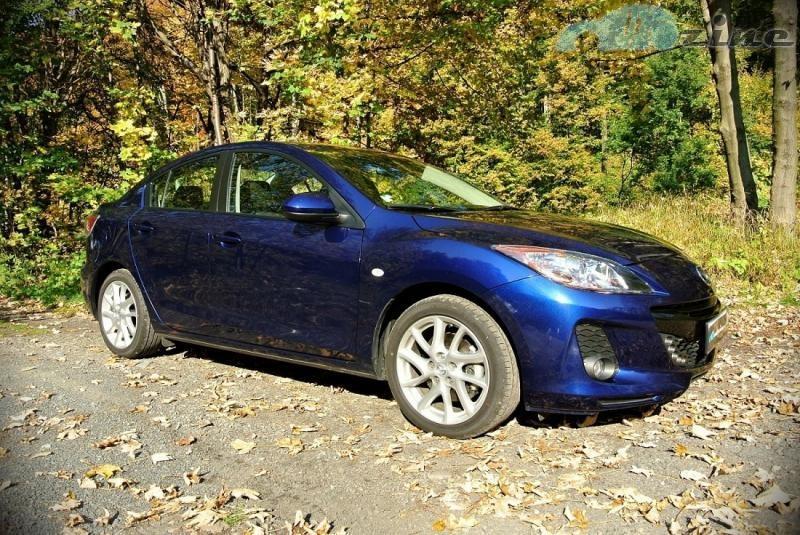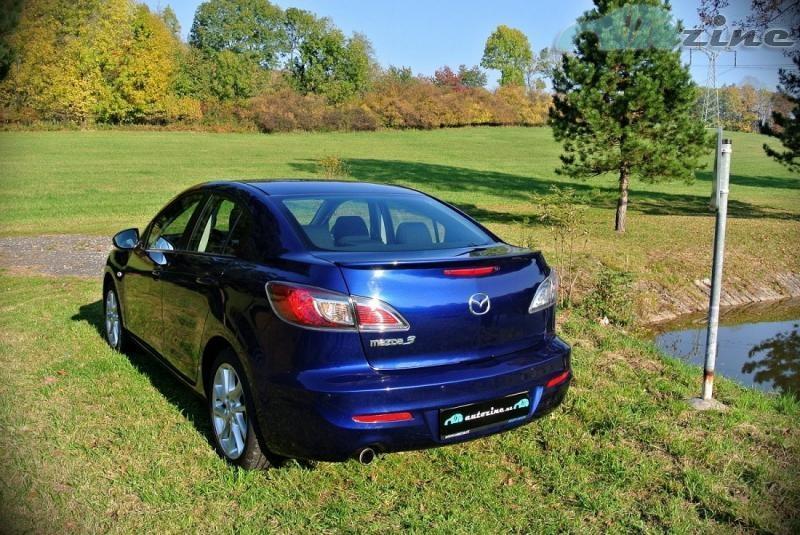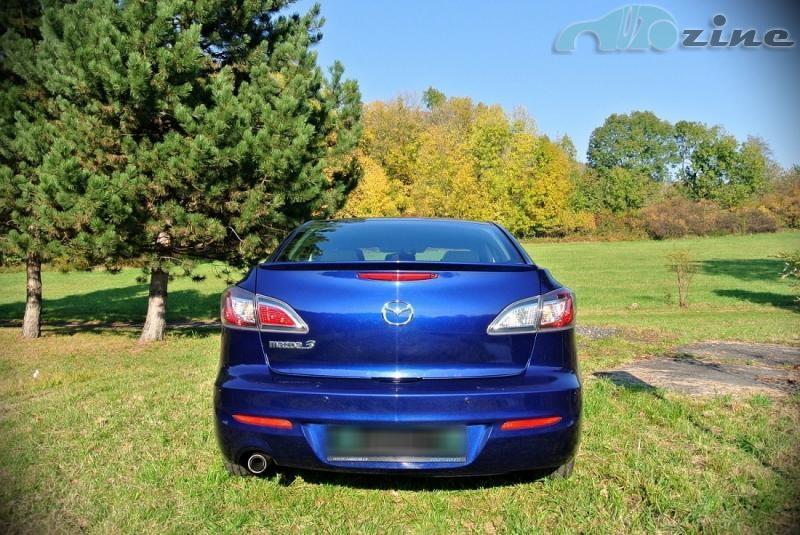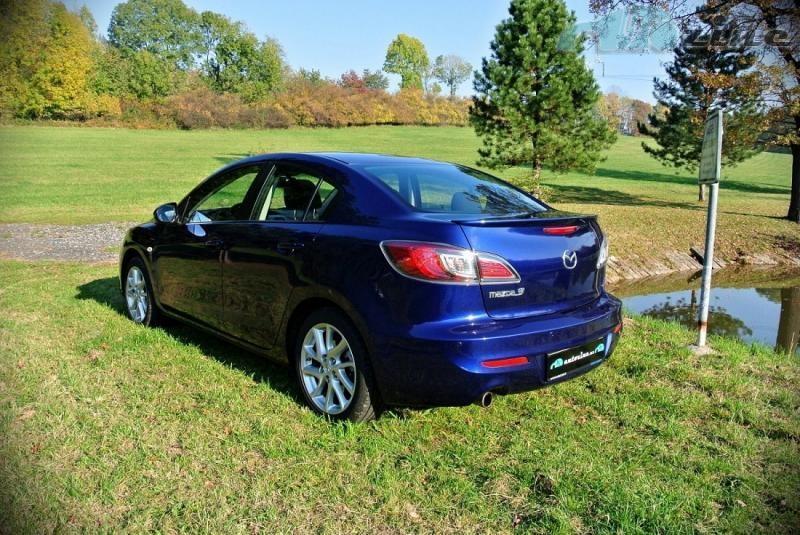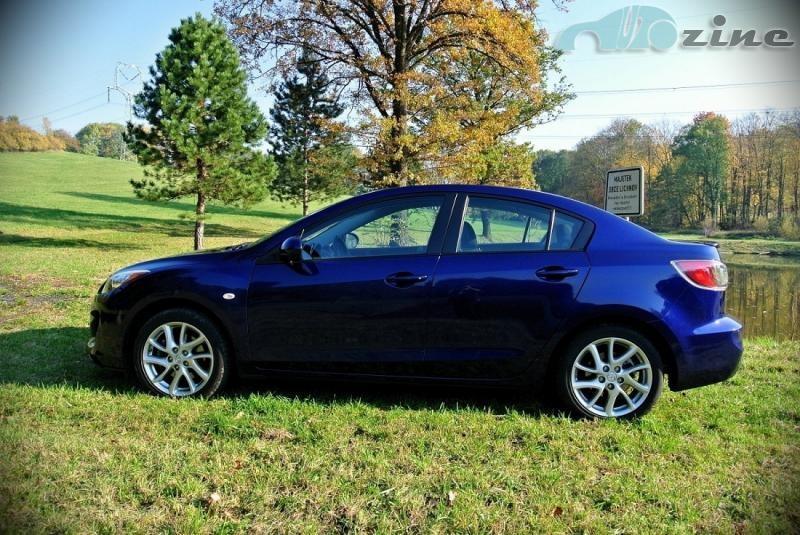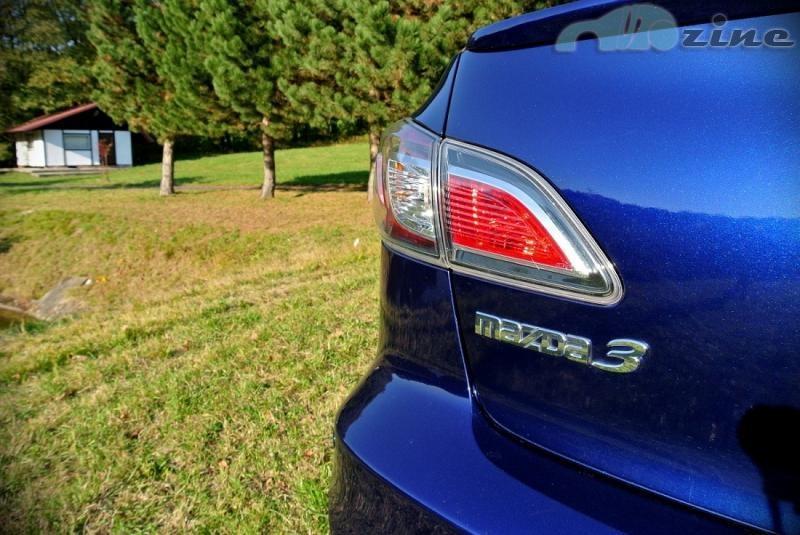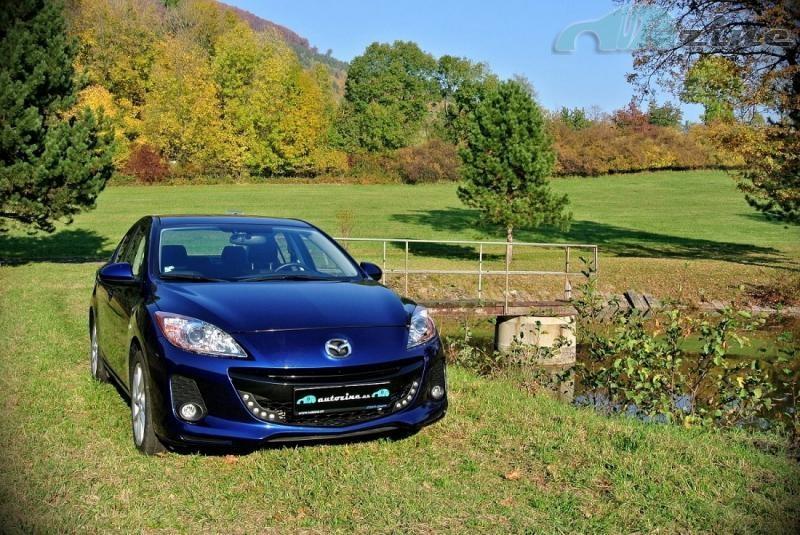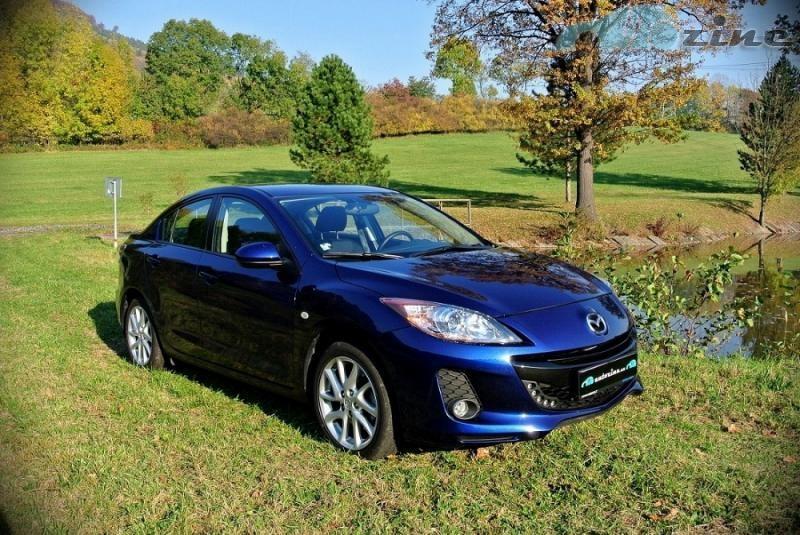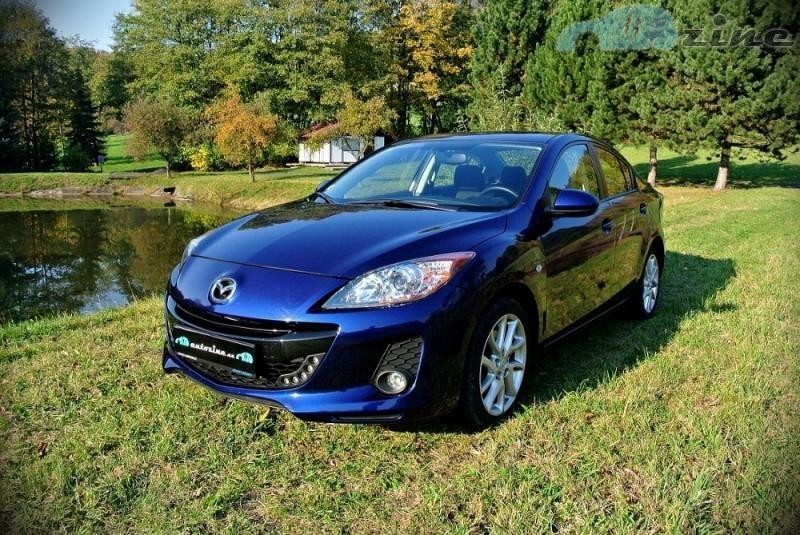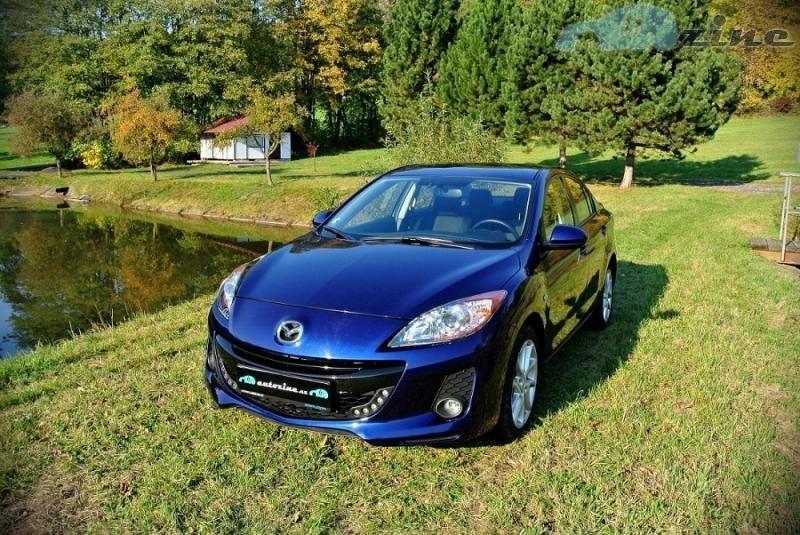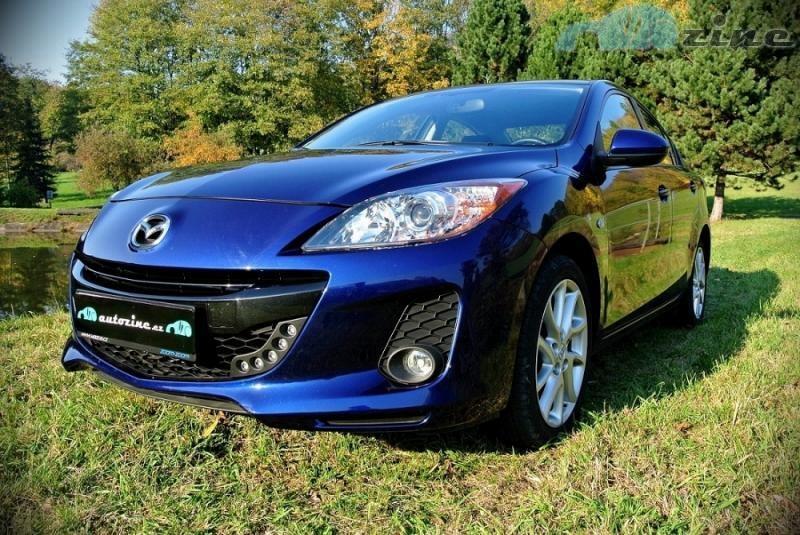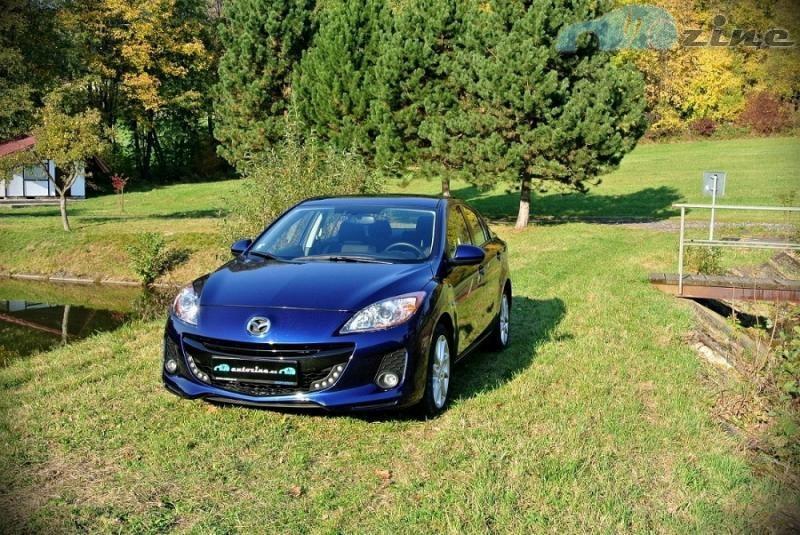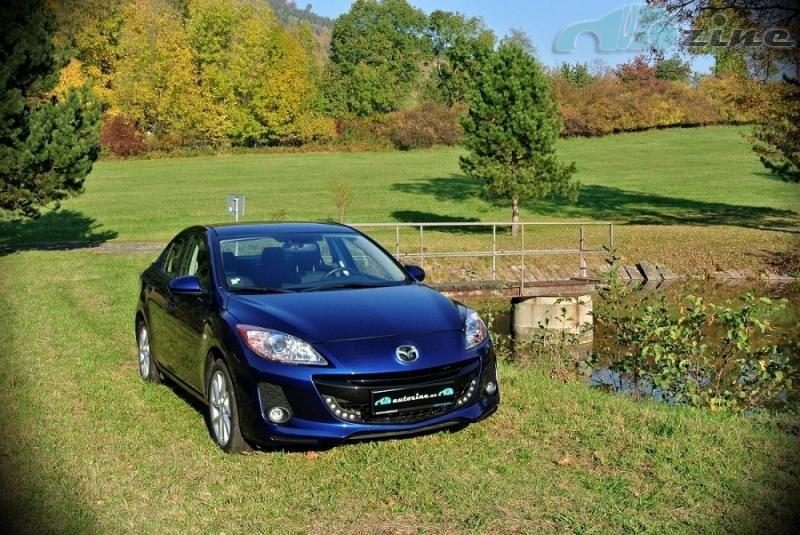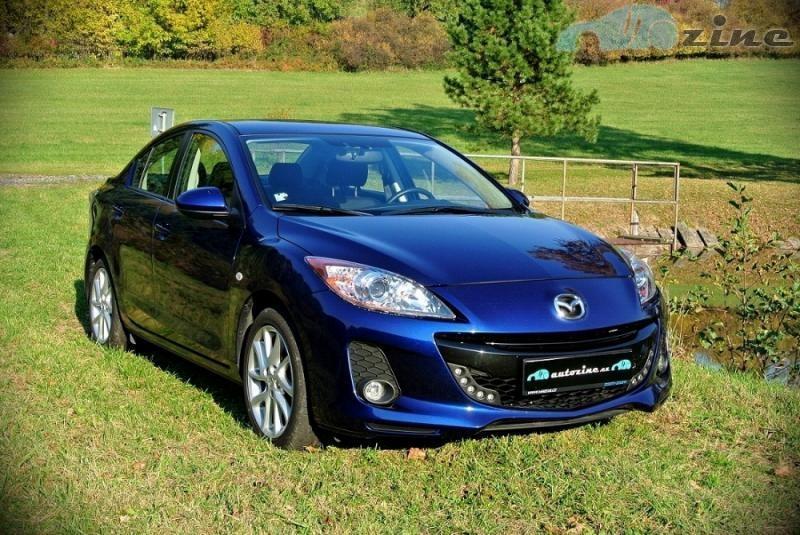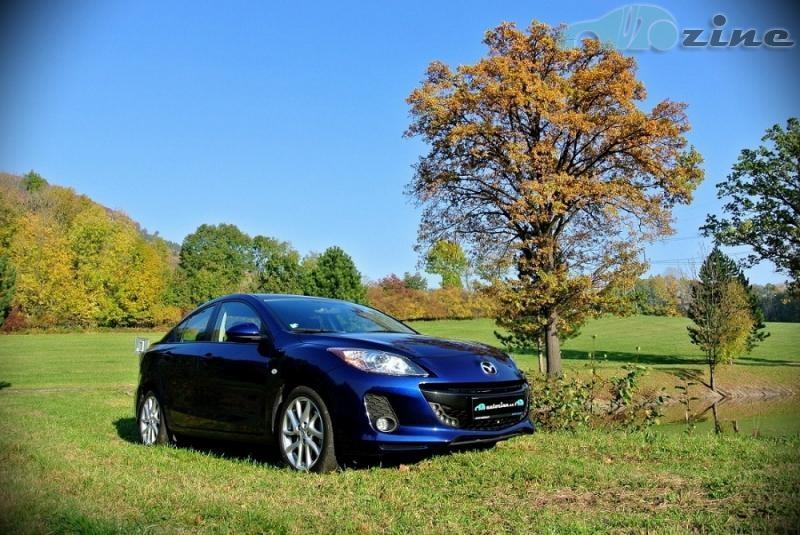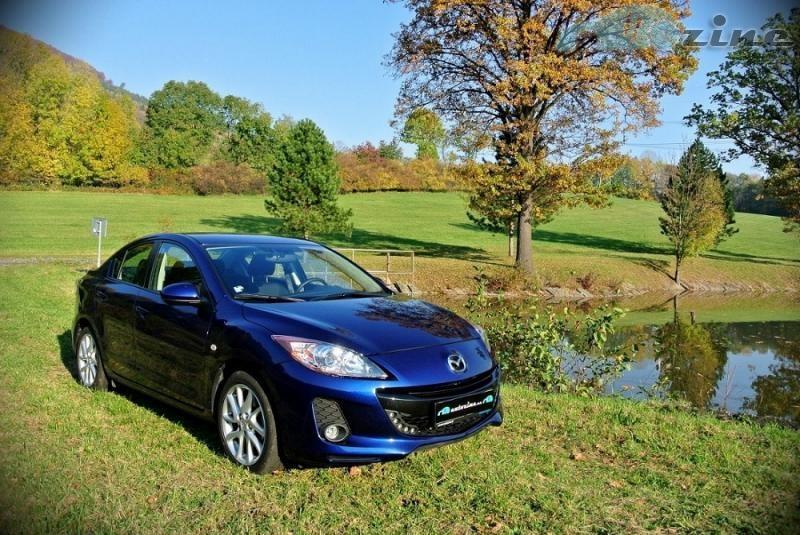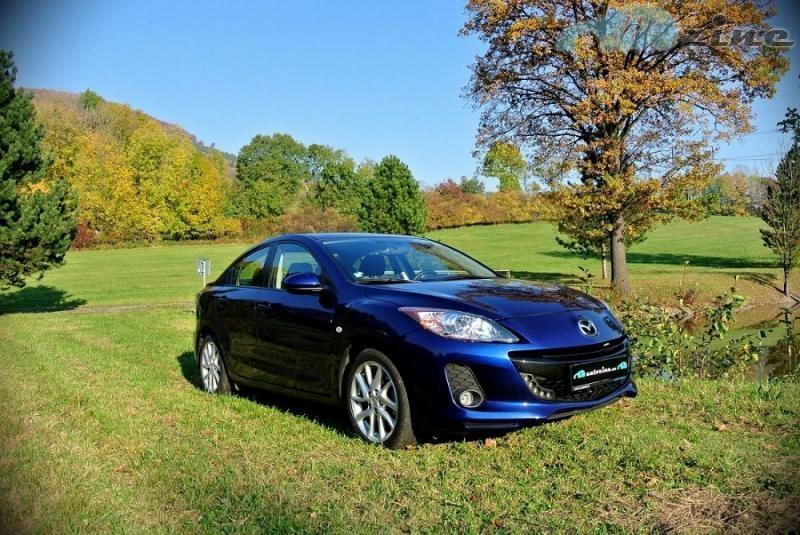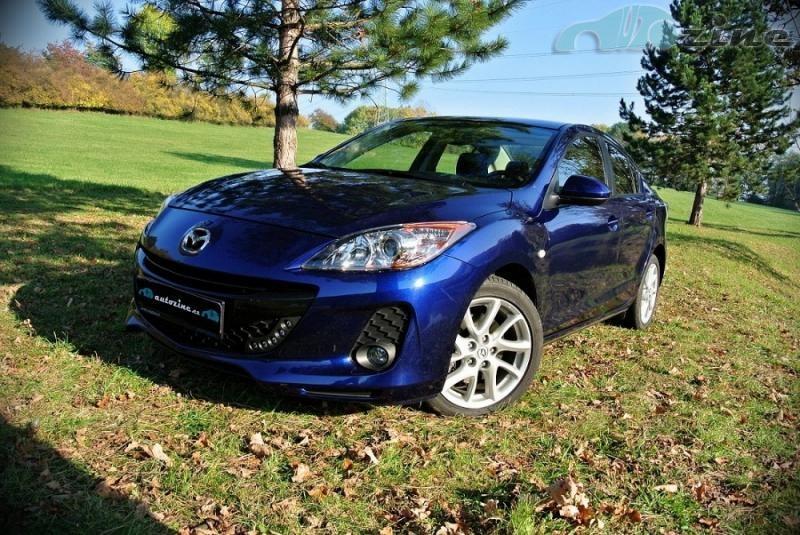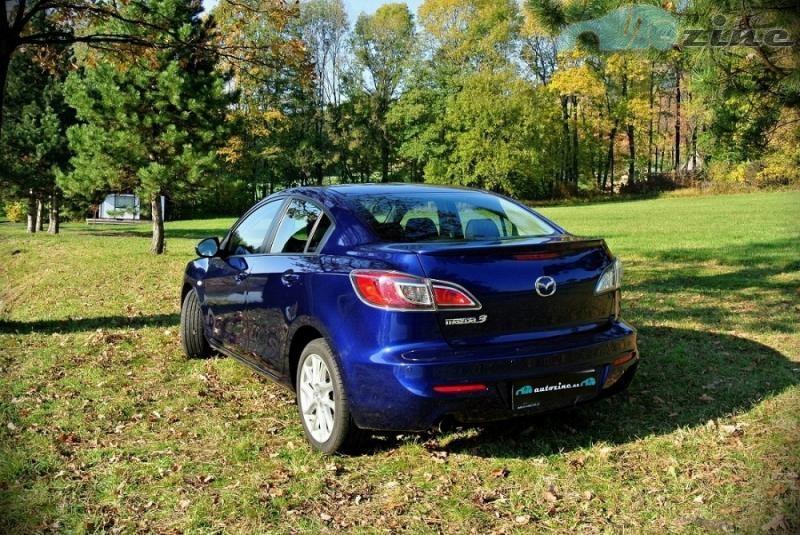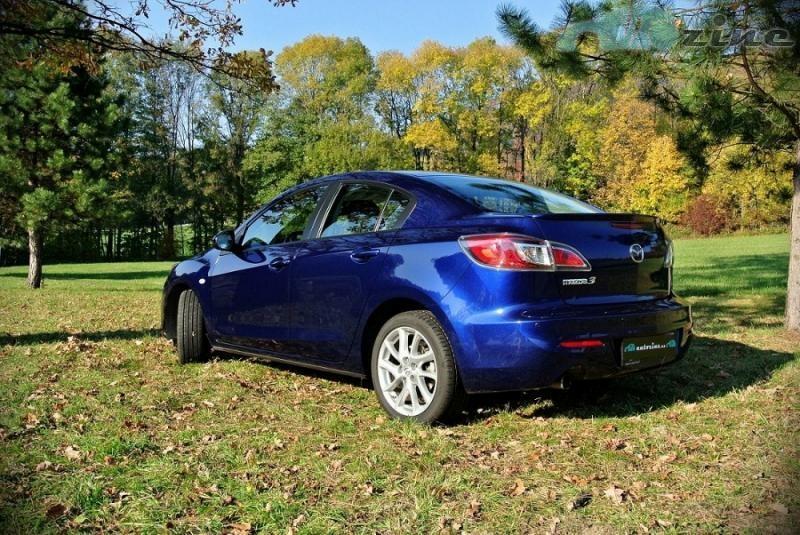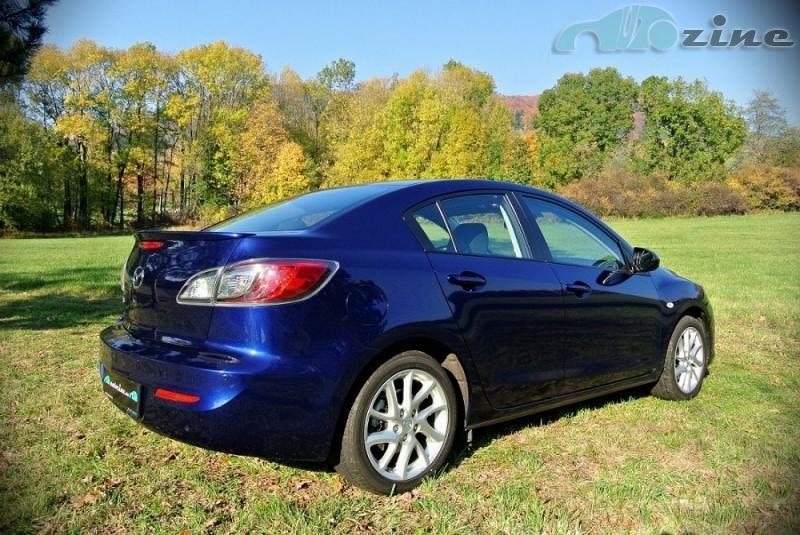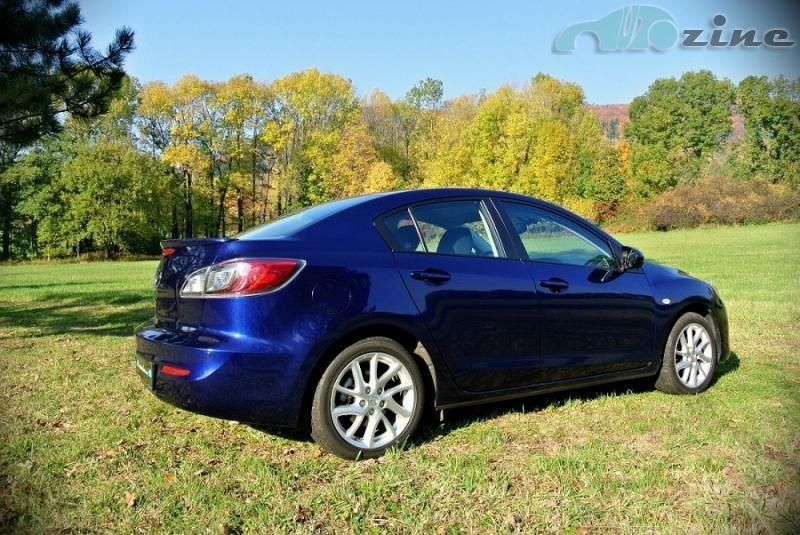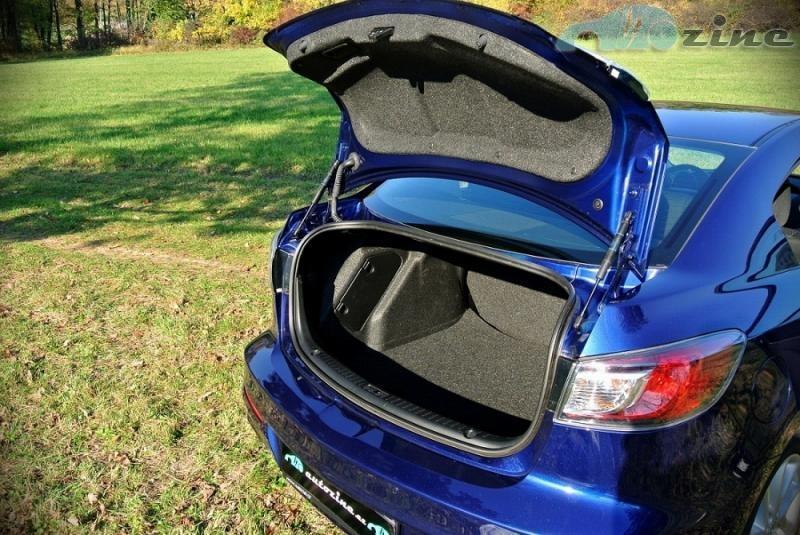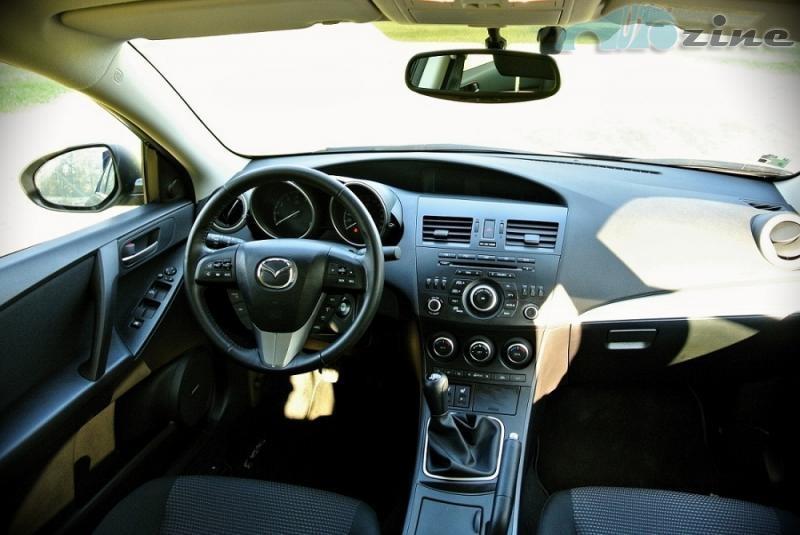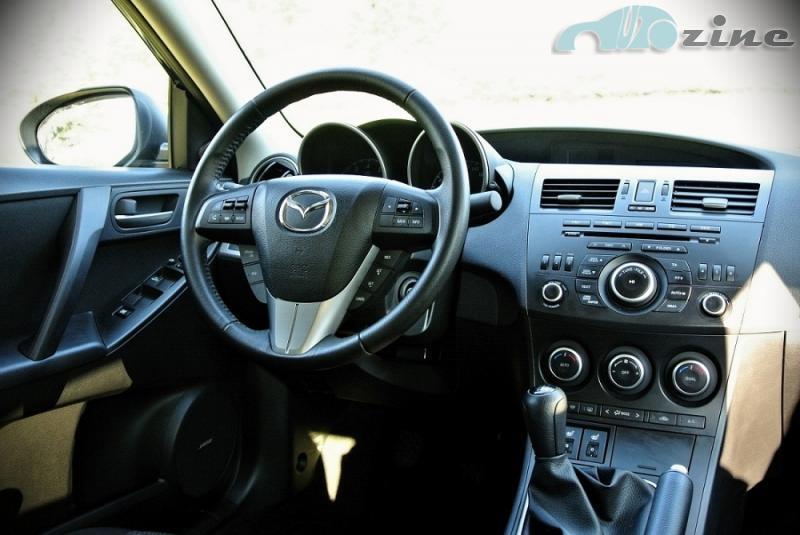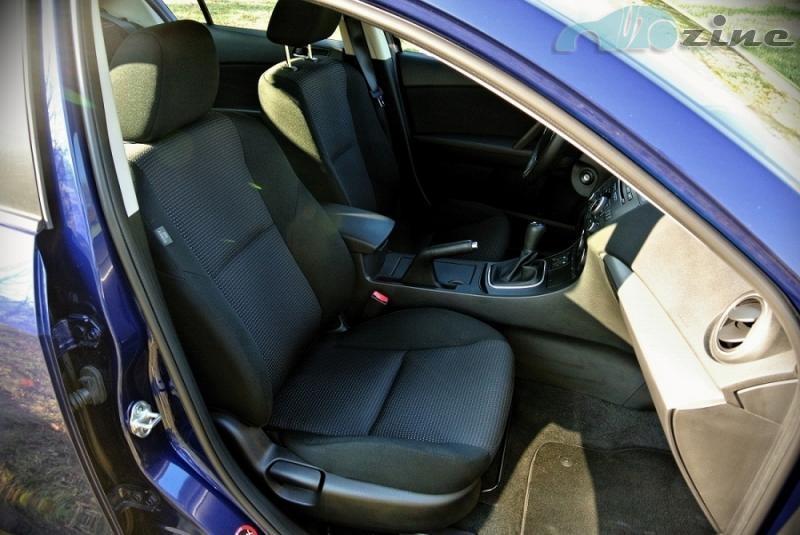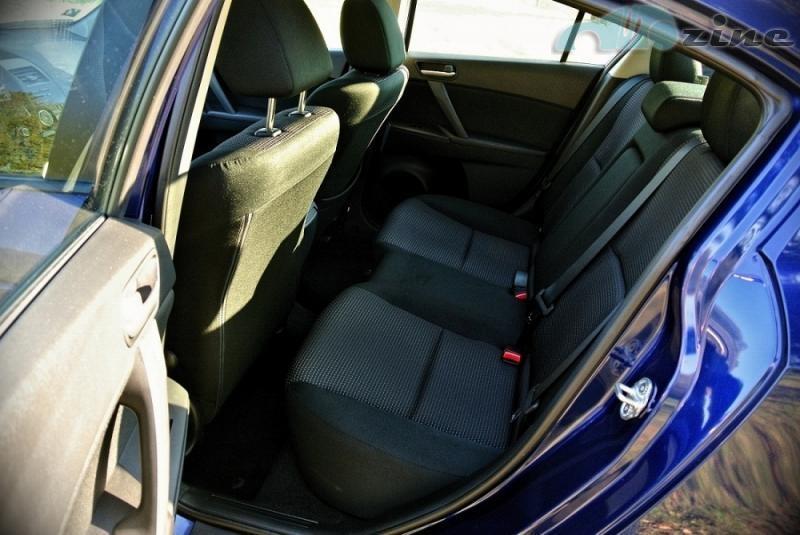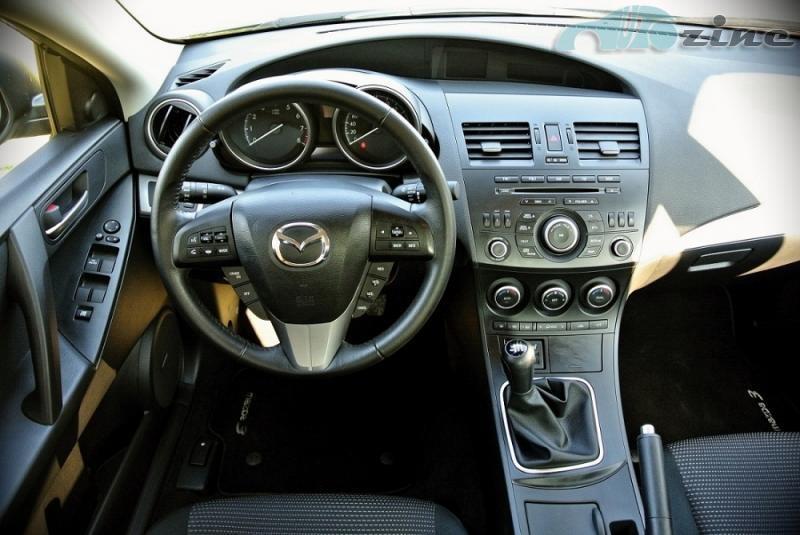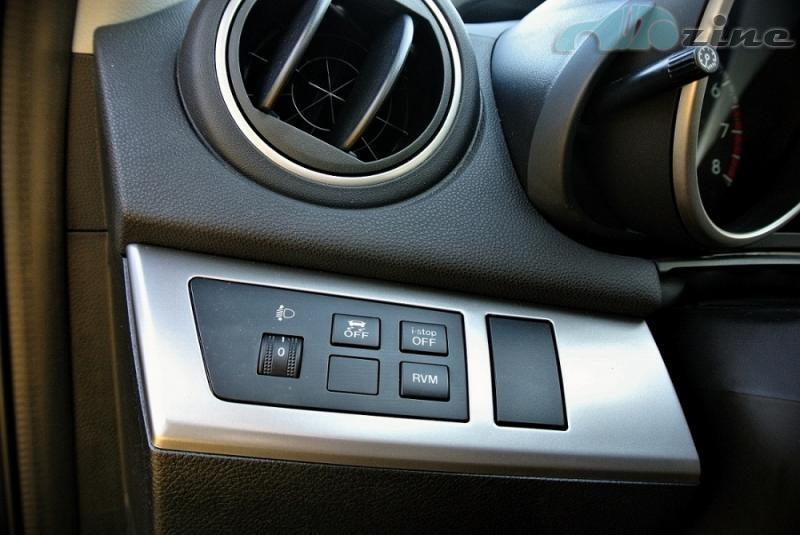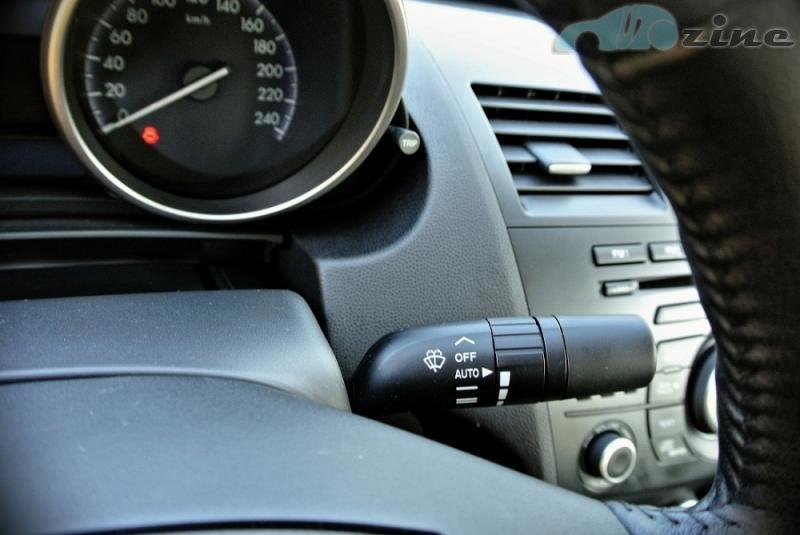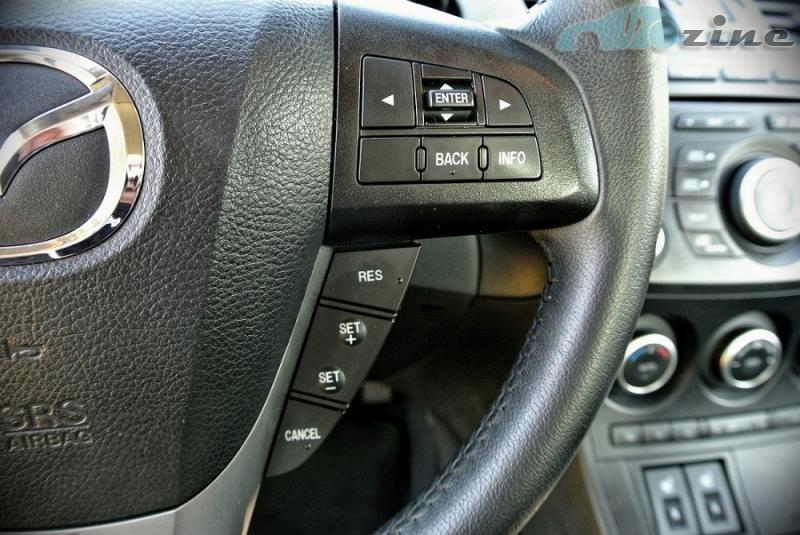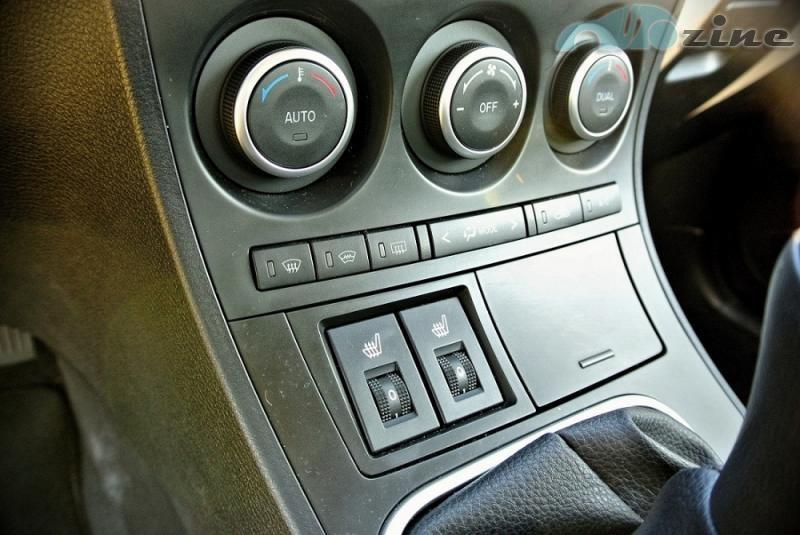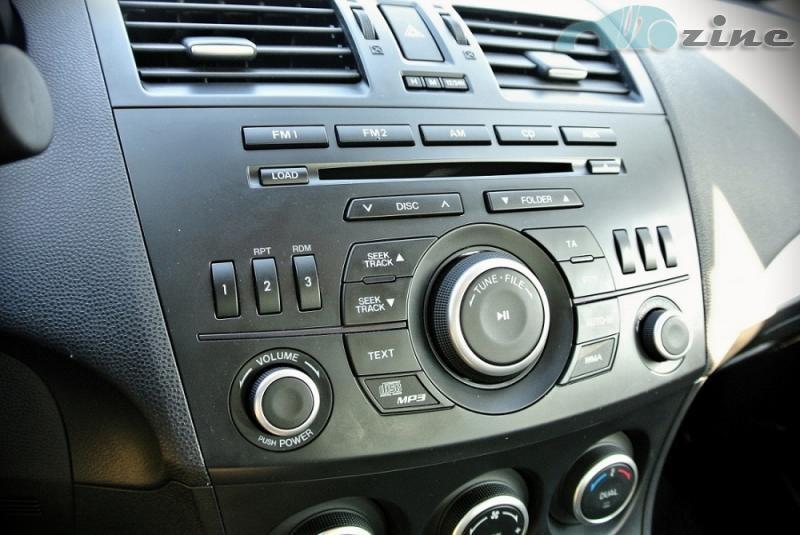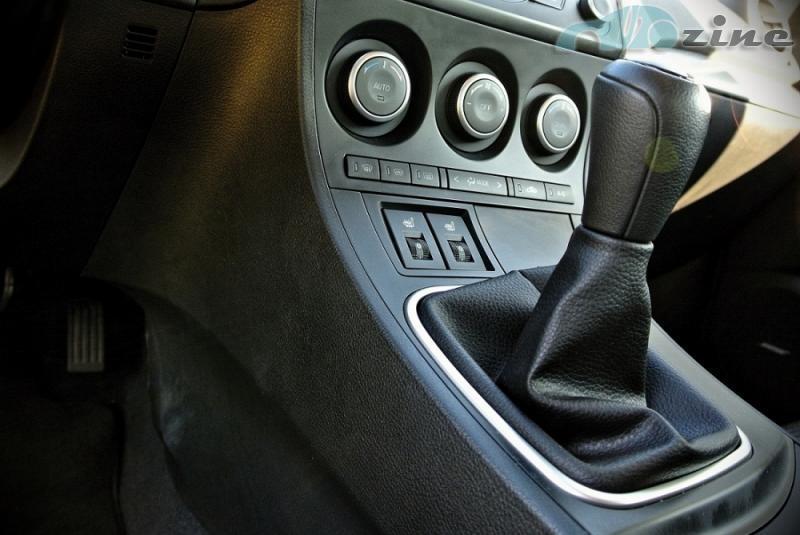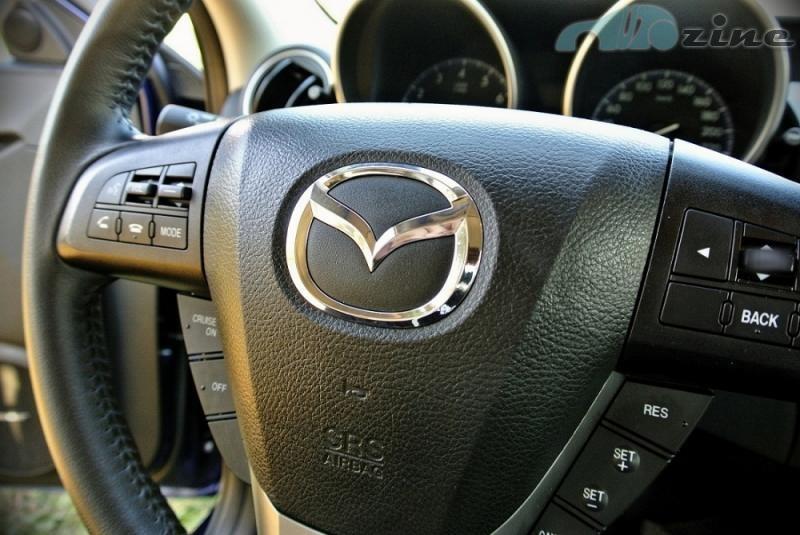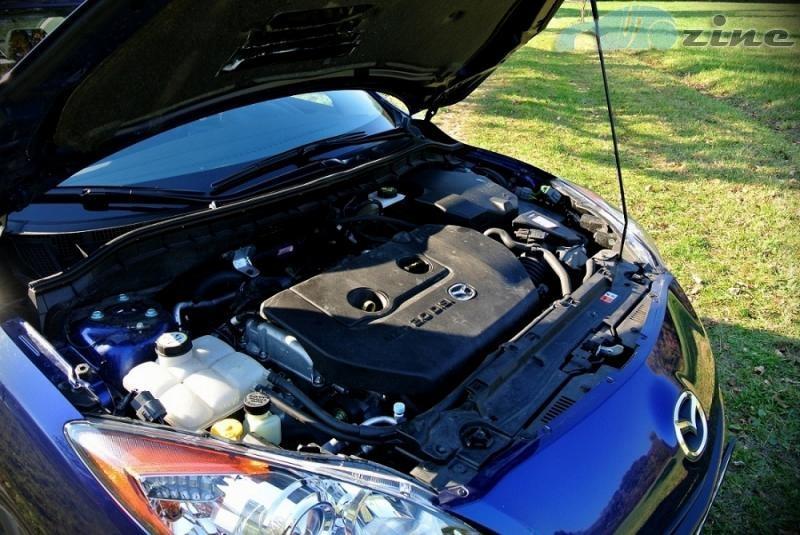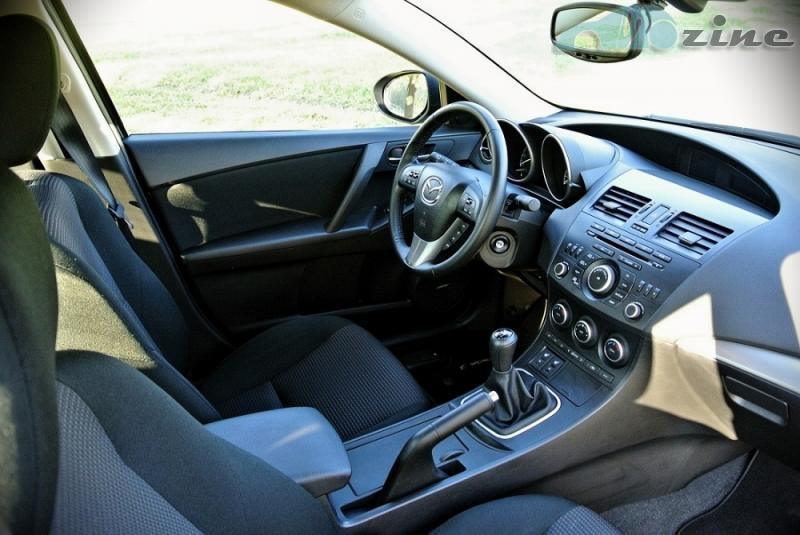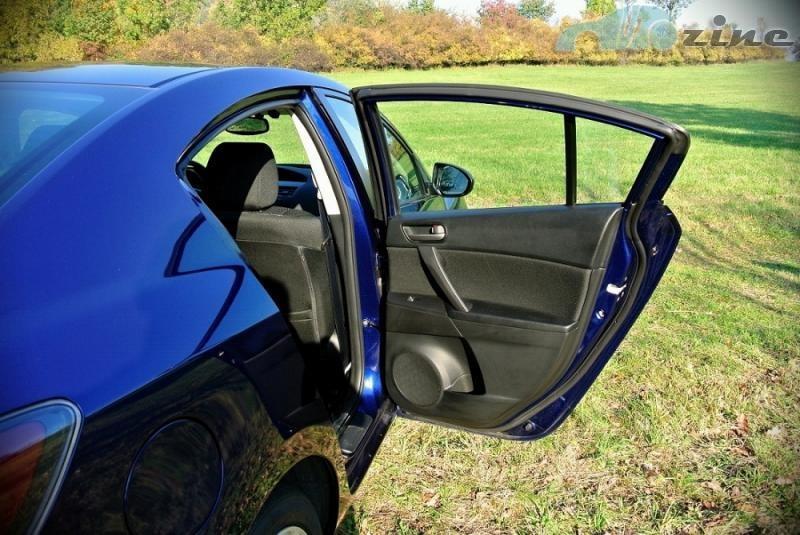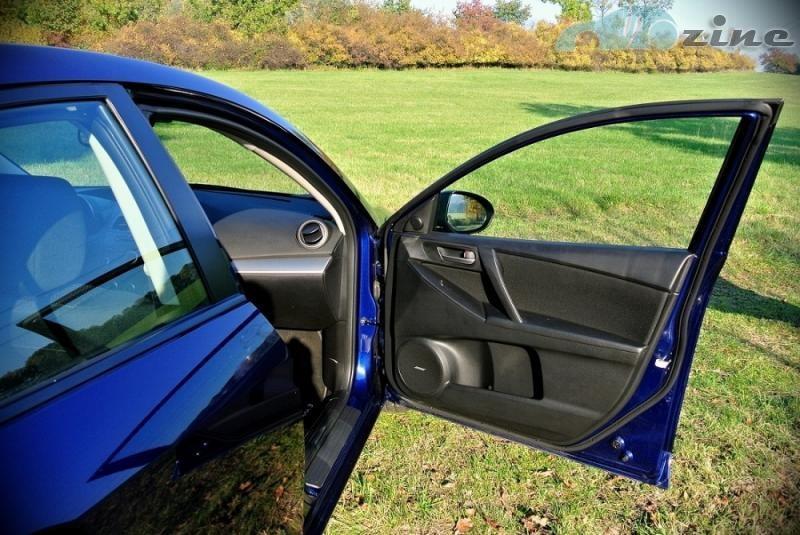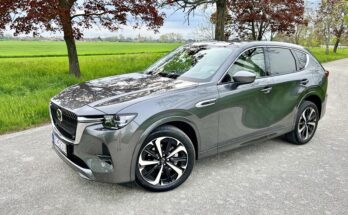The Mazda 3 was first presented in 2003 as a competitor to the Golf , Civic , Astra , great Focus or our Skoda Octavia . When the car company came out with the second generation of the compact three in 2008, it began to become more and more known to real users, who were interested in its practical side and filtered all their requirements straight to the manufacturer. The answer came with the following and currently sold facelifted version.
For the editorial test, we were offered a Mazda 3 with a stylish sedan body and a two-liter four-cylinder gasoline engine under the hood. My first reaction to the car was that it probably won't bother with a moderate appetite and, compared to current turbocharged units, it will suck my wallet, so to speak. However, my initial fears were completely dispelled at the beginning of the test week, and I asked myself why I don't meet him on the road more often.
Design, construction
The Mazda 3 has always been a car that stood out from the competition in terms of shape. So when the designers were preparing the current facelift, it was more about perfecting the previous lines. The most work has been done on the completely revised front bumper with a more angular central opening, round fog lights and a halogen daytime running light system. The rear has also undergone changes. Here I encounter a resolved customer complaint about the bumper area. It is now shorter and allows better access to the 430 liter luggage compartment.
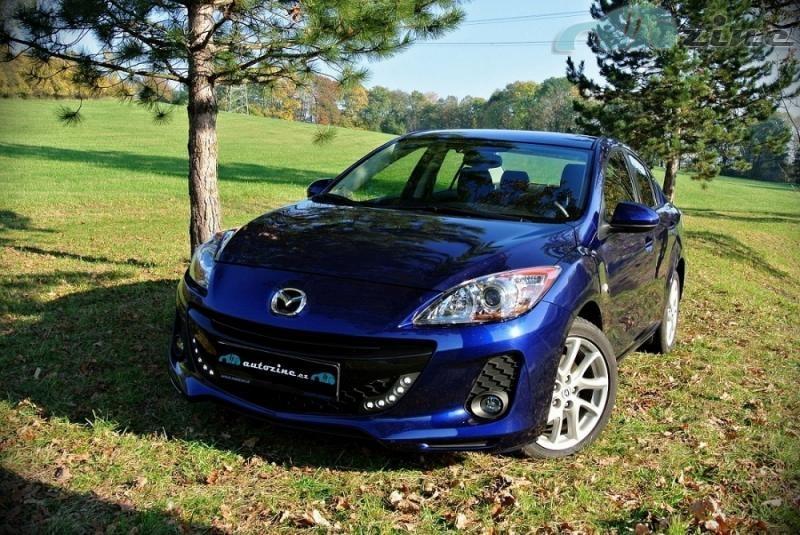
The compact Mazda is built on the global C1 platform developed by Ford . Focus, Kuga or the recently released Volvo C30 are built on the same basis. This is also the secret behind why the Mazda 3 and Ford Focus drive so well. The MacPherson -type front axle with transverse stabilizer is the same for both cars, the rear multi-element suspension is similar. However, the final say was the overall tuning of the chassis and steering, which they did better in Japan.
Interior
After sitting in the interior of the Mazda 3 , I register a few details that are connected with the facelift. I have in mind a nicer coloring of the buttons and better graphics of the devices, which added clarity to the driver's zone. The overall concept of the center console and tunnel was retained, as was the shield with two displays at the top of the instrument panel.
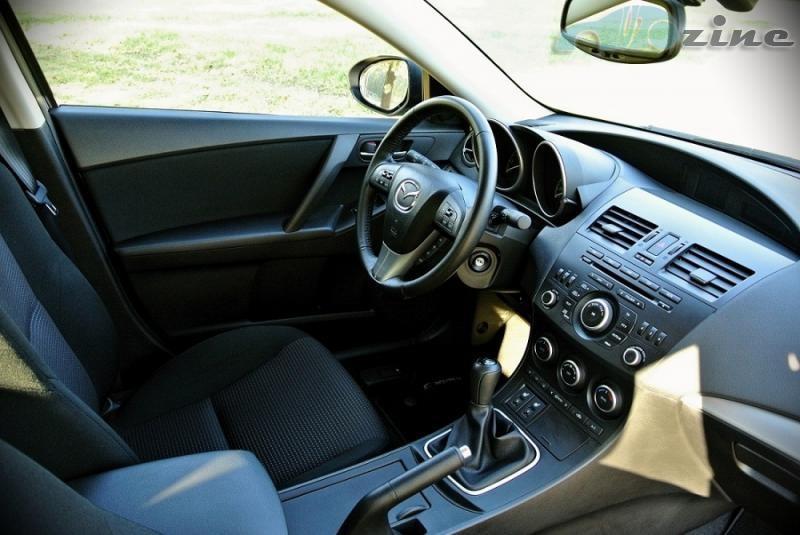
Finding a comfortable and safe position behind the wheel is no problem. You sit pleasantly low in the cleverly dimensioned driver's seat, the versatile setting of the multifunctional three-spoke steering wheel ensures enough room for the knees and an excellent view for almost all height categories. Thanks to the overall width of the car of 1755 millimeters, passengers do not lose comfort even in the transverse direction, thanks to the wheelbase of 2640 millimeters, I can say the same in the longitudinal direction as well. If I consider that thanks to the stepped body there is still enough space for luggage, I have a practical, pleasant and sufficiently comfortable family car for long journeys and daily commutes.
Engine – an atmospheric miracle
Under the hood of the tested Mazda is a two-liter naturally aspirated four-cylinder with a power of 111 kW and a torque of 191 Nm. Nowadays, it is a kind of rose among thorns, if I take into account that all the competition is betting on downsizing and the related supercharging. However, a look at the parameter table explains why I fell in love with the tested piece already after the first kilometers through Prague. The aforementioned power peaks at 6200 rpm and the torque at 4500 rpm. In layman's terms – where the blown sixteens end, the more powerful two-liter with direct injection DISI begins!
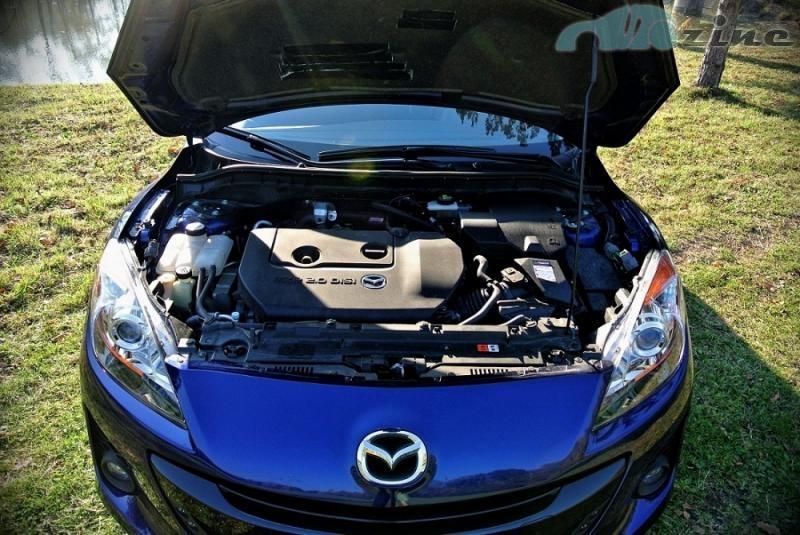
It is direct fuel injection that allows the engine to have a high compression ratio of 11.2:1 . This is related to a sharper reaction to instructions with the gas pedal, a linear increase in power and, above all, a pronounced taste of the engine at high revs. In practice, you won't experience any sporty reactions during comfortable and quiet driving, because Mazda is still thinking about the lowest possible fuel consumption and low emission values. However, try to go on a winding circuit and you will feel the main advantages of the engine at high revs!
The tested motorization hides one important specific feature – the revolutionary i-stop system , which goes hand in hand with the current revolutionary technologies of the manufacturer. Everything seemingly works like any other Stop/Start system on competing vehicles. However, a look under the hood will explain what is at the heart of the poodle. Mazda itself talks about the use of a combustion support system and the engine itself , which, compared to competing solutions (starting with an electric motor), results in a significantly shorter time needed to restart the engine.
Transmission, steering – you won't find better!
I probably would have had a hard time explaining to myself not long ago that one of the best six-speed gearboxes can be found in the compact Mazda 3 . As the leader of this article, I have always respected BMW , but after a test week with the dark blue sedan, this is not the case. The modern gearbox stands out with very short and precise paths, as well as pleasant transitions between individual stages. The fact that a lot of attention was paid to the development of the gearbox is evidenced by the fact that it can withstand rougher handling. As with some of the competition, there is no need to worry that you will get lost in the background of the shifting during sharper maneuvers on the roads.

I had the same feelings about tuning the steering with the electrohydraulic booster. Within the segment, I am talking about the ideal ratio between everyday use and the car's natural sporty character. When turning on a five-pointer, the driver does not get upset thanks to the pleasant resistance of the steering wheel, and when driving on roads, he always finds a reason to turn around at the end of the series of turns he has just driven and try it one more time. At a time when most car manufacturers focus only on the first part of the mentioned ratio, the feeling of feedback and perfect communicative steering is a very welcome change!
Drive
From the development of the test so far, you have probably recognized that the Mazda 3 stands out significantly above the competition in all important points. The same is true of the drive itself, which I found out very soon after handing the car over for a week's test.
I completed my first kilometers with a gasoline Mazda 3 on the traditional crossing from Prague to Moravia. I was a little worried about the higher consumption of the naturally aspirated engine, but there was no reason to. The 380-kilometer route is three-quarters of the highway, the rest is on county roads and through nearby towns. To my own astonishment, upon arrival the on-board computer showed an average consumption of 5.8 l/100 km , which is unheard of given the speed limits! For my personal comparison, I headed to a Peugeot 207 with a turbocharged THP 160 . If I take into account the practically equal weight of both vehicles and the same consumption on the same measured section, I would clearly prefer the old school in the form of an atmospheric two-liter.

The next morning I couldn't do it and set off with the Mazda to my favorite district. Its profile consists of long straights, long hills, horizons and endless turns, in which the overall driving character of the car is best displayed. Not to drag it out – I drove for a long time. Driving the tested sedan caused me real childish joy! It is simple. The designers not only excelled in the development of the gearbox, tuning the steering, but also in the overall setting of the chassis. By its nature, it ranks among the stiffer ones, but on long journeys, and especially on our highways, it does not reduce driving comfort in any way. At the same time, the car is characterized by an indelible mark of perfect neutrality, which in crisis situations turns into a gentle rearward yaw. However, in real day-to-day use, there is nothing to worry about. Getting to the limit of the car's capabilities, even within sight, requires exceeding one's own instinct for self-preservation. And fuel consumption? Another surprise – the average did not exceed 9 liters of Natural per 100 kilometers.
However, it is necessary to come back down to earth and learn how to live with the car in everyday city traffic. Here I would like to highlight the function of the i-stop system. He is not stupid and carefully monitors the engine temperature to avoid cold starts again. However, there are other functions within his competence. These include checking the current settings of the car's heating, seat heating and others that are necessary for the comfort of the crew. Only then does i-stop think about fuel consumption, but in such a way that it can save up to 0.6 l/100 km compared to the blown sixteen THP in the Peugeot 207. My urban average did not exceed 8.8 l/100 km .
Resume
A week behind the wheel of the Mazda 3 2.0i went by like water, and all that was left was to think more about the general knowledge about the car. If I compare it with the competition, it clearly wins with its character, price and range of equipment. The tested trio can be purchased with the selected engine in only one specification, namely the highest TX Plus . For the promotional price of CZK 436,900 ( CZK 80,000 discount), you get a car with complete safety equipment, cruise control, fog lights, heated front seats, Bluetooth connectivity, rear parking sensors, 17" alloy wheels and, now, a blind spot monitoring system RVM . If I include in the final price an item in the form of an attractive metallic body paint (CZK 12,400), I get an exceptional sedan that is not only an everyday helper, but also a weekend toy for a motoring enthusiast. So does it even make sense to look elsewhere?
Base price of the car: 436 CZK 900
Price of a specific car: CZK 449,300
Pros:
– design
– processing and ergonomics of the interior
– the engine's desire to rev
– driving comfort
– excellent steering, shifting
– excellent chassis
– the price
– low fuel consumption
Cons:
– tested engine and body with only one equipment
– worse rear view
Compare the parameters of the Mazda 3 with the competition


